Draft night in the NFL stands as the pinnacle of tension and anticipation for every team across the league. This event holds the power to radically alter a team’s destiny—where a single outstanding draft choice can propel a team towards success, while a poor selection can lead to intense scrutiny and criticism. The immense pressure to nail the perfect draft pick is matched only by the immense pressure these drafted players face, knowing their performance could define their careers. In the world of competitive sports, athletes who can withstand the pressure and perform exceptionally leave a lasting legacy. Conversely, those who falter under the spotlight often face harsh judgment from fans and media alike.
We will dive into the stories of 40 players whose entry into the NFL was met with high hopes but ultimately led to disappointment, earning them the title of the most notorious draft busts in the league’s history. We’ll explore the reasons behind their underwhelming careers and the impact of their journeys on the teams that chose them.
40. Terry Baker, QB, Oregon State
Terry Baker, Oregon State’s exceptional dual-threat quarterback, was a talent ahead of his time. His diverse skill set, however, found little room in the rigid framework of the Los Angeles Rams’ offensive strategy. The Heisman trophy winner’s professional career was marked by constraints and never truly showcased his potential.
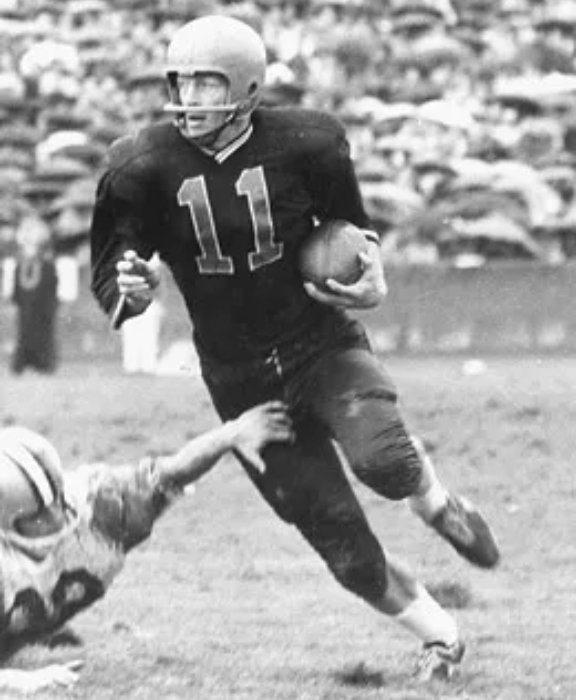
Often remembered for inaugurating the line of Heisman winners whose professional careers fell short of expectations, Baker’s NFL journey stands as a poignant example of how pioneering talents can sometimes be misaligned with the contemporary playing style.
39. Steve Spurrier, QB, Florida
As a standout player and successful coach at the college level, Steve Spurrier had built a significant reputation. However, when it came to his NFL career, the story took a different turn. Drafted by the San Francisco 49ers, Spurrier is most known for his infamous stint with the 1976 Tampa Bay Buccaneers, often dubbed as the worst team in NFL history.
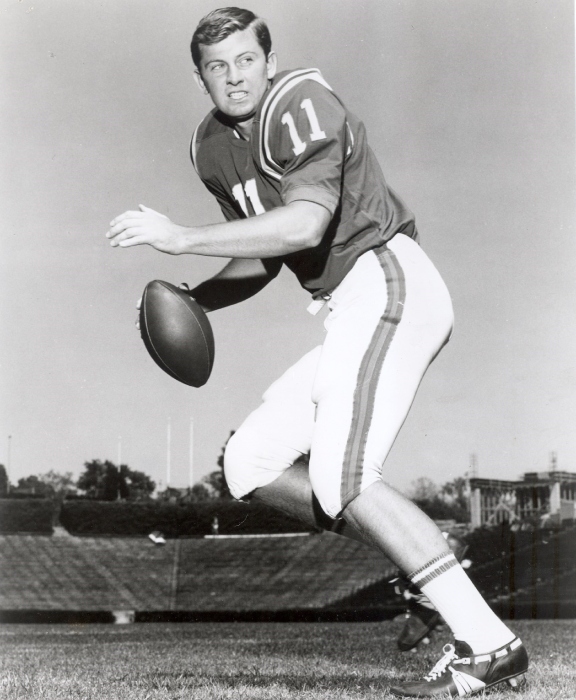
His NFL coaching tenure with the Washington Redskins also didn’t pan out well, further denting his professional legacy. Despite his celebrated college career, Spurrier’s story serves as a sobering reminder of how success in college doesn’t guarantee glory in the NFL.
38. Jack Thompson, QB, Washington State
Jack Thompson, nicknamed “The Throwin’ Samoan,” enjoyed an illustrious college career, setting numerous passing records at Washington State. His outstanding performances caught the eye of the Cincinnati Bengals, who drafted him as the third overall pick in 1979.
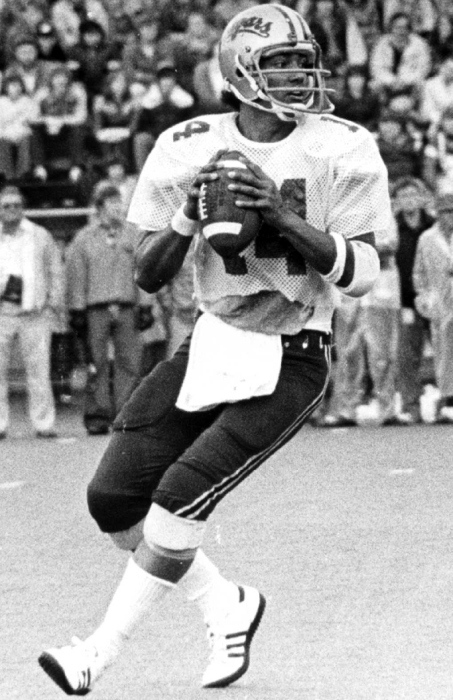
Yet, despite these accolades, Thompson’s pro career never hit the same heights. With the majority of his career spent in a backup role, Thompson’s sole starting year with Tampa Bay was a disappointing affair. His NFL experience reminds us that college fame doesn’t always translate into professional success.
37. Reggie Williams, WR, Washington
When Reggie Williams left the University of Washington, he was heralded as one of the most impressive receivers in the history of the school and the Pac-10 conference. The Jacksonville Jaguars drafted him, expecting to harness this tremendous talent.

However, his NFL career took an unfortunate turn. Except for a single shining season, Williams’ NFL journey was marked by lackluster performances and brushes with the law. His string of arrests garnered as much attention as his touchdowns, offering a stark contrast to the stellar college career he had enjoyed.
36. Gary Beban, QB, UCLA
Gary Beban, who stepped onto the NFL stage with a Heisman Trophy in his pocket, seemingly had a bright future ahead. Fresh from a dazzling college career at UCLA, Beban was picked by the Los Angeles Rams, where he hoped to continue his spectacular trajectory. Unfortunately, he found himself dwarfed in the presence of NFL titan Sonny Jurgensen.

Serving primarily as a backup, Beban barely got the chance to assert his abilities on the field. Despite his decorated college career, his NFL journey was short-lived, barely stretching four years before he decided to hang up his boots. His transition to the NFL serves as a stark reminder of how the glitz of college fame doesn’t always translate into professional success.
35. John Huarte, QB, Notre Dame
John Huarte entered the 1965 NFL draft as the Heisman Trophy winner, riding the wave of a triumphant season at Notre Dame. The glory, however, didn’t follow him to the NFL. Drafted by the New York Jets, his career took a backseat with the arrival of Alabama’s Joe Namath.
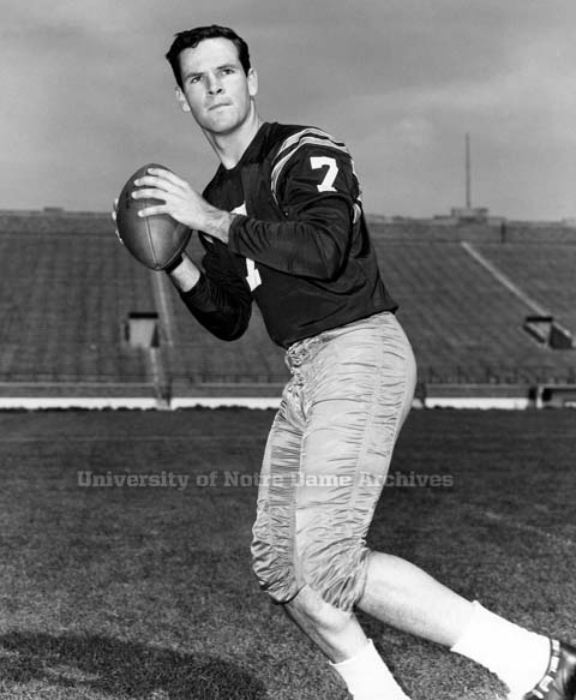
Huarte found himself eclipsed by Namath’s rising star, resulting in him drifting through teams. His disappointing seven-season professional journey was in stark contrast to his college days, reinforcing the narrative of the notorious NFL draft busts.
34. Pat Sullivan, QB, Auburn
Before Cam Newton emerged, Pat Sullivan was considered the touchstone of Auburn’s quarterbacks. He won the Heisman Trophy in 1971, a fitting recognition for his phenomenal skills and game-changing performances. Yet, his transition to the NFL wasn’t as fruitful. Drafted by Atlanta Falcons, his NFL career was plagued with lackluster performances.

With just five career touchdowns against 16 interceptions, Sullivan’s glory days seemed like a distant memory. His struggle to replicate his college success at the professional level serves as a stark reminder that stellar college performance isn’t a guaranteed ticket to NFL stardom.
33. Peter Warrick, WR, Florida State
In the late ’90s, Peter Warrick was an electric receiver at Florida State University. Known for his agility and incredible field vision, Warrick helped steer the Seminoles to their title win in 1999. His career, however, was temporarily derailed due to his involvement in the Dillard’s scandal.

Nevertheless, he returned stronger and was expected to take the NFL by storm. Yet, his six-year professional journey failed to inspire. Despite occasional flashes of brilliance, Warrick’s career mostly stuttered, and he ended up playing in the less popular Indoor Football League.
32.Tim Biakabutuka, RB, Michigan
Biakabutuka left Michigan as one of the best running backs, cementing his place in history with a remarkable 1,818 yards in 1995. He ran through the opposition’s defense like a hot knife through butter, leading his team to one of the greatest upsets in the 90s against Ohio State. Yet, the NFL was a different ball game.
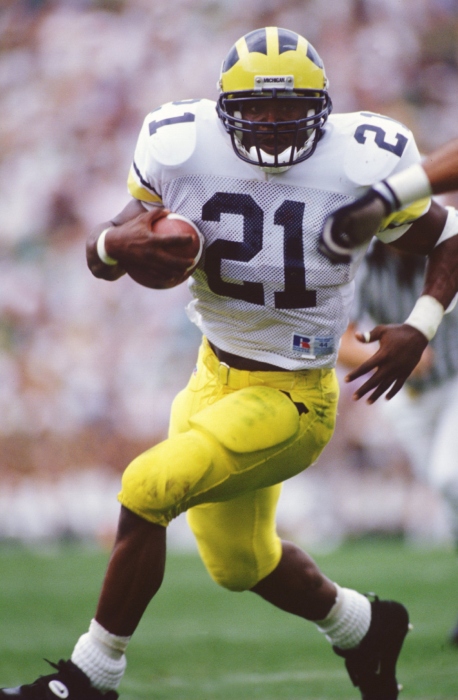
Over six challenging seasons, Biakabutuka struggled to replicate his college heroics. His career was fraught with injuries and underperformance, averaging less than 500 yards per season. Despite high expectations, his professional career was a stark contrast to his shining college years.
31. Brady Quinn, QB, Notre Dame
Quinn, armed with 36 university records, left Notre Dame, bearing the hopes of becoming a shining star for the Cleveland Browns. However, NFL stardom proved to be a different beast altogether. After being drafted in 2007, his journey was more rocky than meteoric. Locked in a perpetual struggle with Derek Anderson for the QB1 spot, Quinn’s expected launch to stardom kept getting delayed.
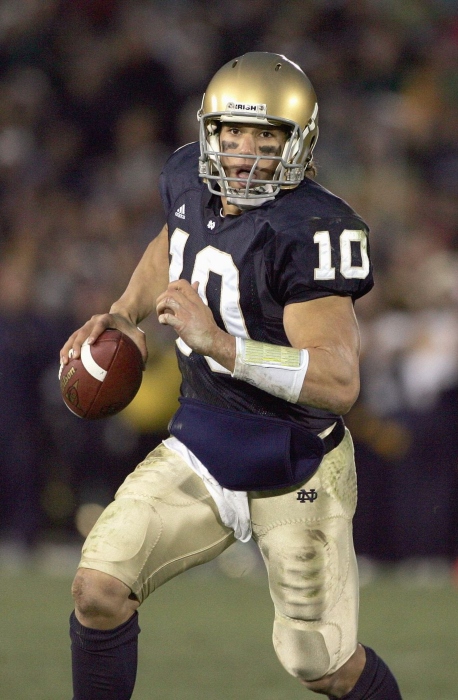
His move to Denver didn’t improve matters, as he found himself wedged behind Kyle Orton and Tim Tebow in the pecking order. Despite moments of brilliance, injuries, and inconsistency dampened his trajectory, making him one of the memorable busts in NFL history.
30. New York Jets QB Christian Hackenberg
Garnering the dubious distinction of being one of the most infamous busts in NFL history as a second-round selection, Christian Hackenberg’s tenure with the Jets was abysmal, to say the least. Projected as the prospective savior of the Jets’ future in 2016, Hackenberg’s catastrophic performance rendered him the most regrettable draft choice over the past decade.
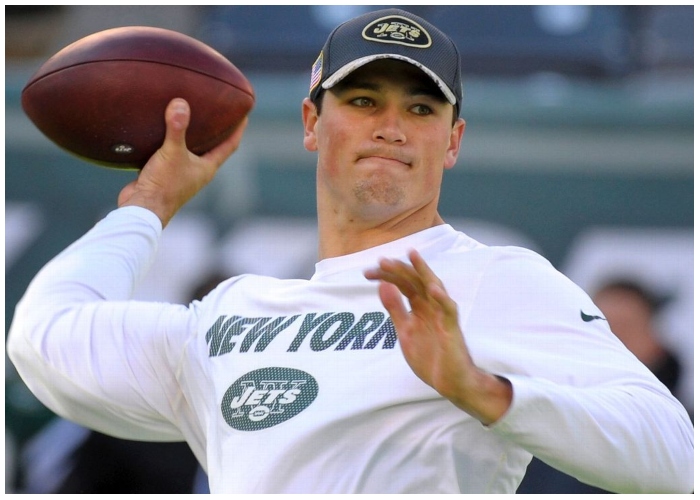
Subsequently bartered to the Oakland Raiders in exchange for a conditional draft selection, Hackenberg’s trade was abruptly nullified as he faced dismissal before the season’s commencement. A duo of teams ventured on Hackenberg, who astonishingly ended up as the inaugural quarterback selected in the draft’s first two rounds. It didn’t participate in a regular-season contest since the AFL-NFL amalgamation 1967.
29. Baltimore Colts QB Art Schlichter
An adept double-threat quarterback from Ohio State, Art Schlichter was perceived as a stellar choice for the Baltimore Colts during the 1984 draft, earning the fourth overall selection. The anticipation enveloping Schlichter was formidable, but his promising career capitulated to a severe gambling compulsion. Schlichter’s spiraling addiction led to the squandering of his entire signing bonus midway through his inaugural season, culminating in a 13-month suspension imposed by the NFL.

Upon the conclusion of his penalty, Schlichter returned, only to be shown the door by the Colts posts his confession of succumbing to the vice of gambling during his suspension. Schlichter was granted a second lease of life by the Buffalo Bills. Still, a sudden USFL demise allowed Buffalo to entrust Jim Kelly, causing Schlichter’s ultimate exit from the NFL.
28. Seattle Seahawks DE Steve Niehaus
Securing Niehaus as the second overall pick during the 1976 NFL Draft, Seattle had made their maiden player selection in the organization’s history. The initial impressions of Niehaus were commendable; securing 9.5 sacks in his rookie season and securing the NFC Defensive Rookie of the Year honors.
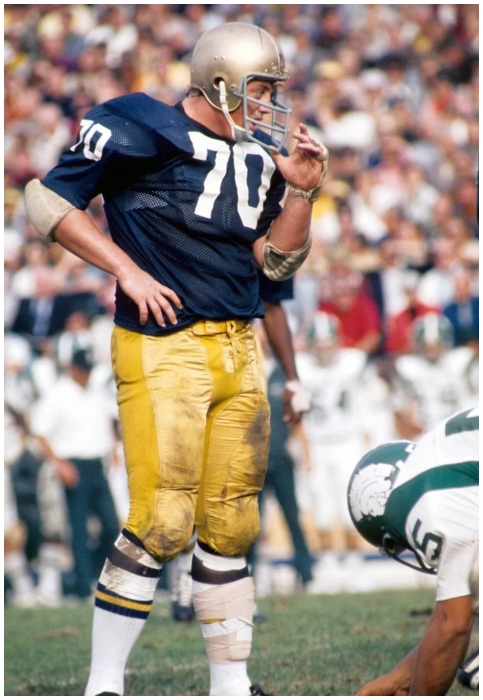
However, this rookie expedition proved to be a career pinnacle for Niehaus, as a series of grave knee injuries caused his potential to evaporate. Niehaus’ stint in Seattle lasted a mere three years before the Seahawks conceded, and he played another year with the Minnesota Vikings before retiring.
27. Houston Texans QB David Carr
David Carr was the inaugural selection in the 2002 draft hailing from Fresno State, with Houston envisioning him as their future franchise quarterback. But the Texans’ inability to construct a robust offensive line for Carr resulted in him enduring a staggering 76 sacks in his rookie year, setting an untouched NFL record.

The excessive sack burden led to Carr developing detrimental habits as he strove to salvage a poor team single-handedly. Carr had moments of glory, leading the NFL in completion percentage in 2006. Still, he failed to transform the Texans into a victorious outfit.
26. Indianapolis Colts DE Steve Emtman
One glaring example of this category of busts is Steve Emtman, the first overall selection of the 1992 NFL Draft by the Indianapolis Colts. Emtman, a star defensive end at the University of Washington, was crucial in guiding the Huskies to secure the national championship in 1991. Emtman’s talents were universally recognized, earning unanimous All-American status post accumulating 62 tackles, including 20.5 tackles for loss.
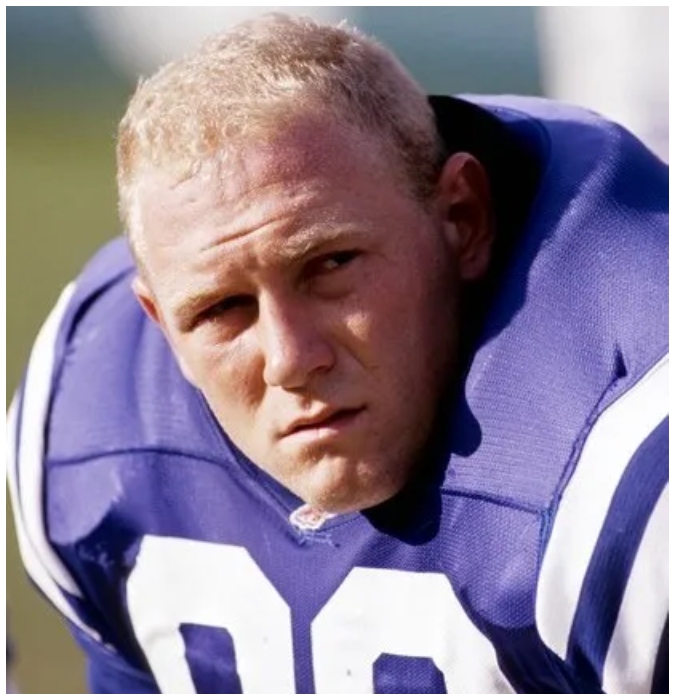
The Colts witnessed glimpses of his prowess in Emtman’s rookie season when he intercepted a pass and returned it 90 yards for a touchdown, securing the victory over the Miami Dolphins. This performance earned Emtman the accolade of AFC Defensive Player of the Week. However, a series of season-ending knee injuries, exacerbated by the unfriendly artificial turf at the RCA Dome, truncated his promising career.
25. New York Giants OT Ereck Flowers
Despite his collegiate laurels, Flowers could never match the lofty expectations in New York. As a left tackle, he conceded a whopping 169 pressures – an unfortunate league record since 2015. The burden of performing in the demanding New York environment proved strenuous for Flowers, who was accused of forsaking his team by ex-teammate and NFL commentator Geoff Schwartz.
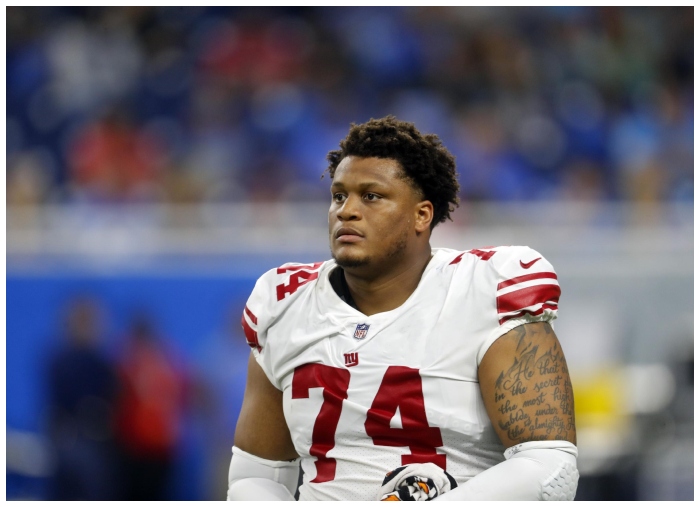
The Giants realigned Flowers to right tackle in 2018 and benched him in favor of Chad Wheeler. This led to Flowers’ release and subsequent movement through the league. Eventually, he found stable ground as a starting guard for the Washington Football Team, having previously played for Jacksonville and Miami.
24. Cincinnati Bengals QB David Klingler
The Bengals were ecstatic when they secured Klingler with the sixth pick in the 1992 draft from the University of Houston. Klingler had rewritten the NCAA record books, setting an all-time record for touchdown passes in a season with 54. This record endured for 16 years.
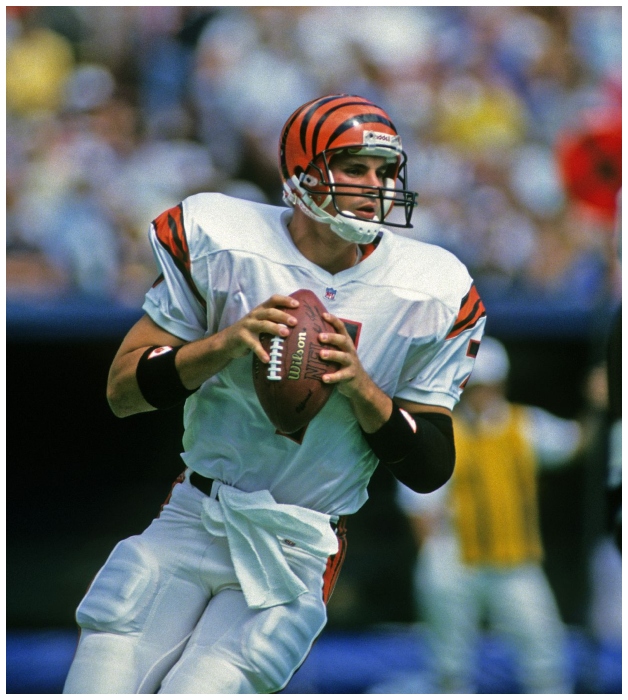
However, Klingler’s prolific offensive performance did not follow him into the NFL, leading to mediocre numbers in his initial seasons as the Bengals’ quarterback. Klingler lost his starting position in 1995 to Jeff Blake. His career was terminated after a major elbow surgery severely impacted his throwing capacity.
23. Chicago Bears WR Kevin White
Like Steve Emtman and Steve Niehaus, Kevin White was a dynamic player who never fully exhibited his capabilities due to many injuries. The Chicago Bears secured White with the seventh pick in the 2015 NFL Draft following a dominant final year at West Virginia.
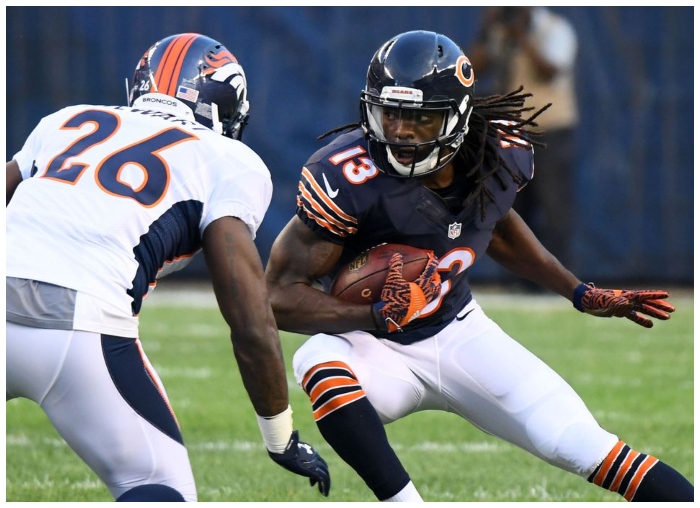
During his tenure as a Mountaineer, White accumulated 109 catches, 1,447 yards, and 10 touchdowns, aligning with Amari Cooper as a top receiver in the 2015 class. White’s injury woes began early – a stress fracture in his shin prevented him from playing a game in his rookie season. He managed to play four games in 2016 before again breaking his left leg. White’s 2017 season was cut short after just one game due to a fractured shoulder blade.
22. New York Jets DE Vernon Gholston
A player with mediocre college performance but stellar athletic abilities can sometimes beguile NFL teams into drafting based on potential. This was precisely the case with the Jets’ 2008 selection, Vernon Gholston. Despite a single commendable season at Ohio State, his athletic prowess at the NFL combine won him many admirers.
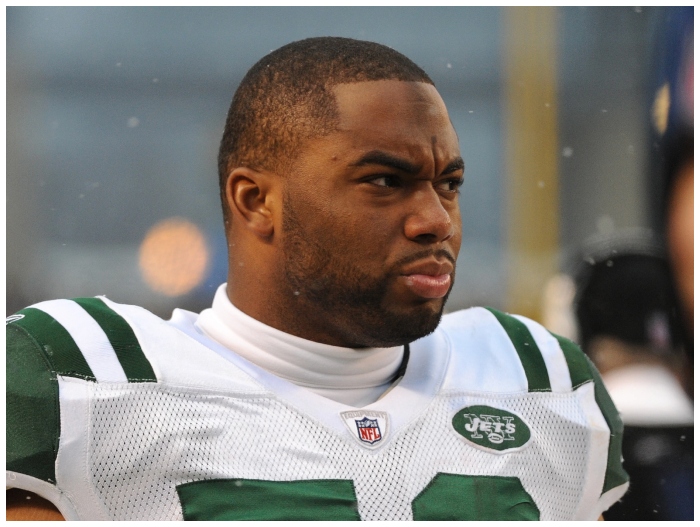
The Jets were looking for a formidable edge rusher to fill the void left by John Abraham’s 2005 trade to Atlanta. They selected Gholston with the sixth overall pick. However, Gholston failed to make a substantial impact, contributing just 42 tackles and zero sacks during his three-season stint with the Jets. The team released Gholston after three seasons, and he never returned to an NFL roster.
21. Jacksonville Jaguars WR Justin Blackmon
The Jaguars have made numerous draft errors, but the case of Justin Blackmon stands out as particularly unfortunate. The team hoped to secure a high-impact receiver when they selected Blackmon fifth overall from Oklahoma State in 2012. Blackmon immediately justified the Jaguars’ faith with an impressive rookie season, recording 64 catches for 865 yards and five touchdowns.
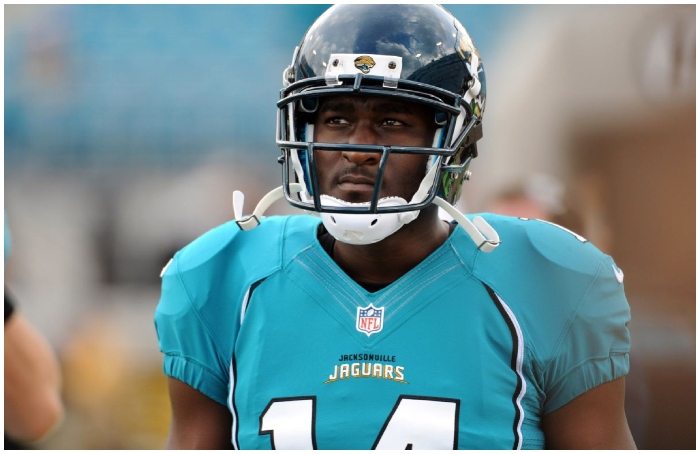
But a series of suspensions and legal complications derailed his promising career. Blackmon was suspended at the start of the 2013 season after an off-field incident. He participated in only four matches before being indefinitely suspended again for a second violation of the NFL’s policy. Subsequent run-ins with the law effectively terminated Blackmon’s career. Regrettably, he has not stepped onto an NFL field since the 2013 season.
20. Seattle Seahawks QB Rick Mirer
Having left an indelible mark at Notre Dame, Mirer established himself as a beacon of hope for the Fighting Irish, their champion in the 1992 Sugar Bowl. He bore the weighty expectation of emulating the legendary Joe Montana. The dispute surrounding the draft selection left an intriguing question unanswered – who was the superior choice, Mirer or Drew Bledsoe?
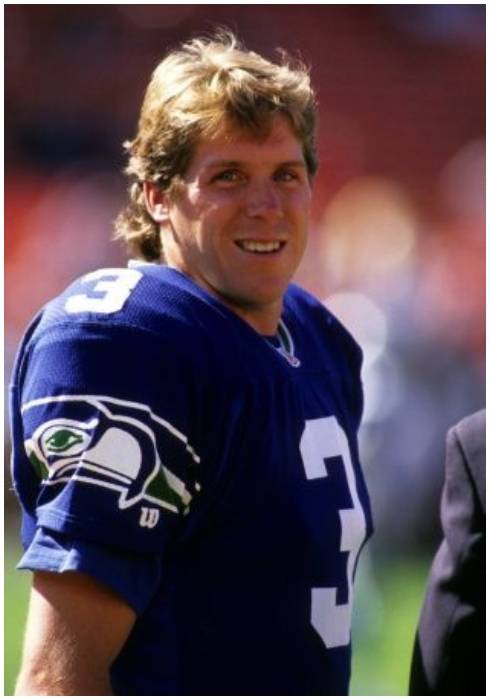
Fate put Bledsoe in New England’s lap as their first choice, leaving Mirer as Seattle’s second pick, a strategic move that favored the Patriots. Entrusting Mirer with the helm from the get-go, the Seahawks witnessed an underperformance spanning four seasons, with an unfortunate ratio of 41 touchdowns to 56 interceptions. After the 1996 season, Mirer was uprooted and transplanted to Chicago, where a scanty three games marked his beginning and end.
19. Louis Rams RB Lawrence Phillips
Phillips, a harbinger of controversy during his Nebraska college days, saw multiple brushes with the law, ranging from aggression to peace disturbance. Despite the warning signs, Phillips’ undeniable talent was a lure for the St. Louis Rams, who eagerly secured him with the sixth pick in the 1996 draft.
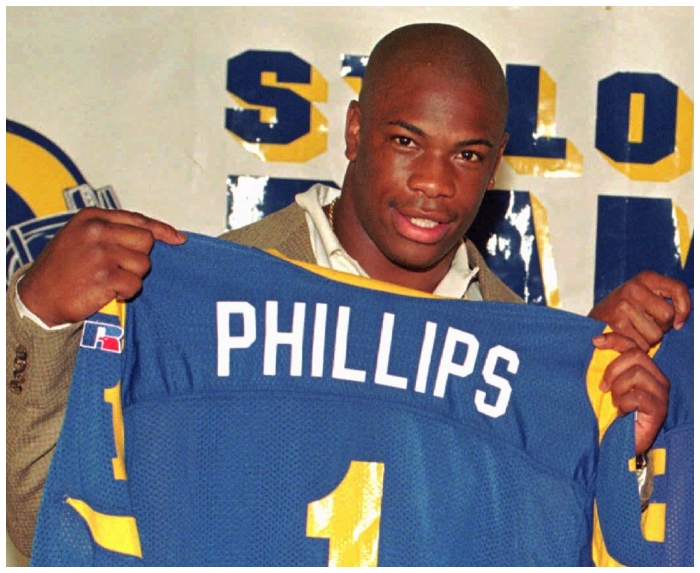
In a show of unwavering belief in Phillips’ untapped potential, the Rams traded away Jerome Bettis, a future Hall of Famer, to anoint Phillips as their starting running back. Phillips, however, was shown the door by the Rams within a year and a half after showing up to practice in an inebriated state. Tragically, Phillips’ story ended with his incarceration and eventual suicide in 2016, a poignant conclusion to a life rife with unfulfilled promises.
18. Atlanta Falcons LB Aundray Bruce
Having secured his place twice in the All-SEC roster at Auburn, Bruce became the MVP of the 1987 Citrus Bowl, evoking comparisons to Lawrence Taylor. Despite his 11-year tenure in the NFL, he fell short of reaching LT-like prowess.
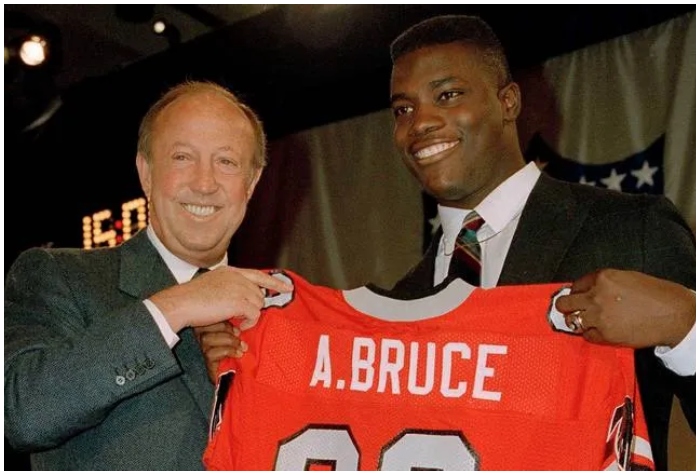
Four seasons with the Falcons saw Bruce amass 16 sacks, 176 tackles, four forced fumbles, and three interceptions across 62 games – commendable for a starter but inadequate for an anticipated revolutionary force. His stint with the Raiders bore a similar tale. Bruce’s failure to meet expectations influenced the selection of linebackers, with none being a top pick since his decline.
17. Los Angeles Rams OT Greg Robinson
A period of great first-round draft picks saw the Los Angeles Rams taking a gamble on Auburn’s Greg Robinson, the 2014 no. 2 pick. This stalwart protector of Auburn’s 2013 SEC championship team, weighing in at 330 pounds and standing tall at 6-foot-5, seemed the quintessential left tackle for shielding Sam Bradford.
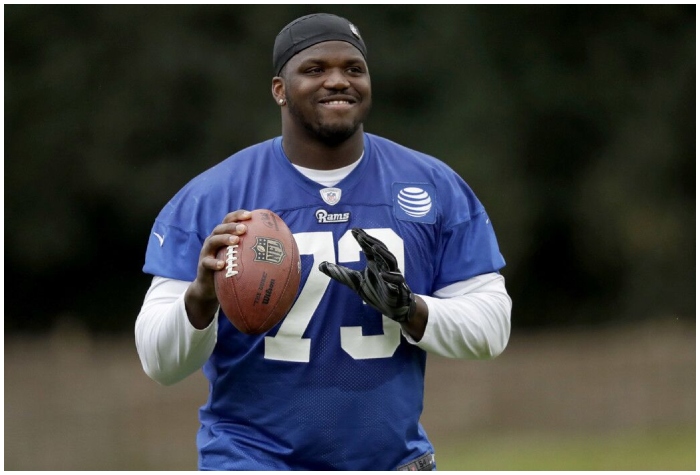
However, Robinson’s potential remained a mirage as he grappled with the NFL’s competitive landscape and maintaining a suitable weight. After three years, a trade-off to the Detroit Lions was followed by an off-the-field mishap, an arrest in 2020, sounding the end knell for his NFL career.
16. Washington Redskins QB Heath Shuler
Shuler’s stellar career at the University of Tennessee, which culminated in him finishing second in the Heisman Trophy in 1993, saw him shatter multiple significant passing records for the Volunteers. His triumphs earned him the third overall pick in the 1993 draft by Washington. A contract dispute leading to a protracted training camp holdout heralded a rocky commencement for Shuler.
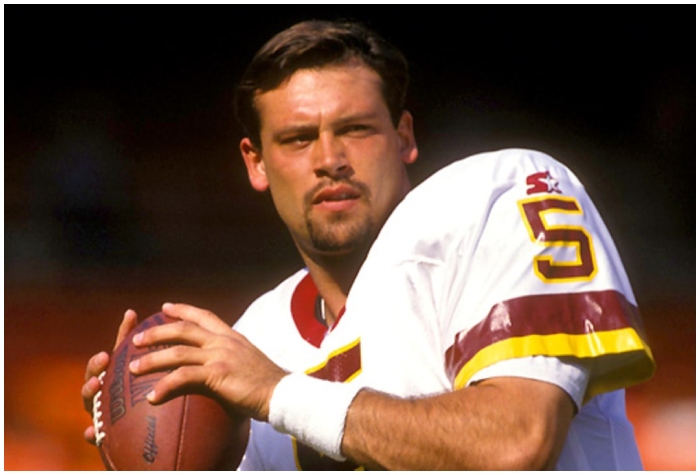
This late start and performance issues threw him into a fierce competition for the quarterback position with Gus Frerotte, a seventh-round pick in 1994. The favor eventually tilted towards Frerotte, leaving Shuler to be traded to New Orleans in 1997. Even with the Saints, Shuler’s fortunes didn’t improve, and a grave foot injury precipitated the termination of his career.
15. Miami Dolphins DE Dion Jordan
A radiant talent at Oregon, Jordan’s deft versatility across defensive schemes made him the darling of NFL scouts. Twice selected for the first-team All-Pac 12 and an All-American in 2012, Jordan showed promise as a rookie, contributing 26 tackles and two sacks in 2013.

However, Jordan’s professional trajectory was marred by multiple suspensions due to violations of the league’s PED policy, resulting in an indefinite NFL ban. Despite his reinstatement in 2016, the Dolphins chose to part ways. Various other franchises, including Seattle, Oakland, and San Francisco, took a gamble on Jordan with mixed results.
14. Detroit Lions QB Andre Ware
The 1989 Heisman Trophy winner, Ware, showcased his incredible talent, throwing for 4,699 yards and 44 touchdowns and setting many NCAA records during the season. His spectacular performance caught the eye of Fontes, who envisaged a future where Ware and Barry Sanders would steer Detroit to multiple Super Bowl victories.

This vision, however, quickly lost its luster as Fontes showed a noticeable reluctance to utilize Ware, providing him with only six starts in four years and leaning heavily on Rodney Peete. Subsequent brief stints with the Raiders and Jacksonville Jaguars did little to resurrect Ware’s sinking career.
13. Cleveland Browns RB Trent Richardson
In a departure from contemporary norms, Alabama’s Richardson, a powerhouse on the field, was picked in the top five of his draft class. His exceptional junior year, where he accumulated 1,679 yards and 21 touchdowns, culminated in two national championships for the Crimson Tide.
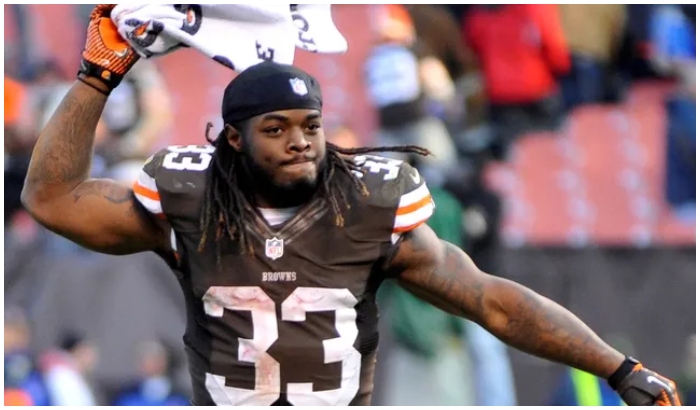
His performance in his rookie year for the Browns was noteworthy, with 950 yards and 11 touchdowns. However, he was shockingly cut short in his second season when he was traded to the Indianapolis Colts for a 2014 first-round pick. This move was initially scorned but proved prophetic, as Richardson failed to make his mark in Indianapolis.
12. Arizona Cardinals QB Josh Rosen
An abundance of prospects in his class led to a heated debate, with Josh Rosen of UCLA being a popular choice. Advocates for Rosen touted him as the most pro-ready of the bunch, boasting traditional offense experience at UCLA and an ideal build for the NFL.
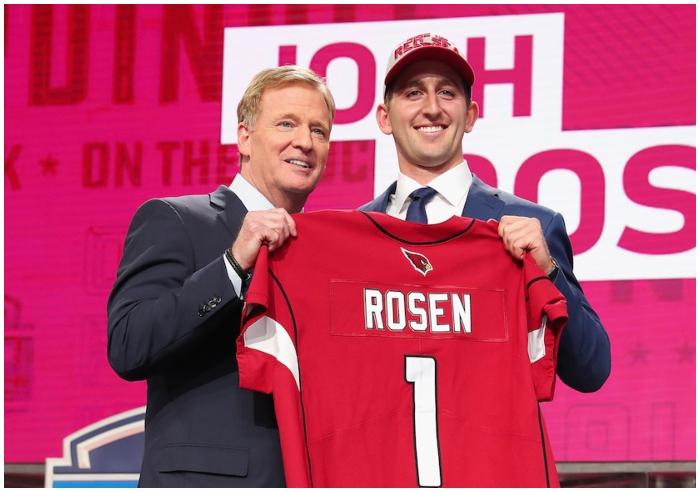
Despite concerns over Rosen’s demeanor and commitment to elite football, the Arizona Cardinals took a chance on him with the 10th pick in 2018. Unfortunately for Rosen, Bradford’s failure thrust him into a challenging situation, starting 13 games with a disappointing 3-10 record. The following year, the Cardinals’ new coach, Kliff Kingsbury, favored Kyler Murray, casting Rosen adrift.
11. Cleveland Browns QB Tim Couch
Couch, a Heisman Trophy finalist in 1998, set an SEC single-season record for passing yardage that remained untouched for over two decades until Joe Burrow broke it in 2019. Carrying a franchise as demanding as the Browns proved a monumental challenge for Couch, resulting in fluctuating performance levels.

Despite an excellent fourth year, a potentially career-defining breakthrough was cruelly halted when he broke his leg right at the end of the regular season, causing him to miss the playoffs. A sterling 400-yard performance by Kelly Holcomb against the Steelers in the playoffs stoked the fires of a quarterback controversy, signaling the beginning of the end for Couch in Cleveland.
10. Cleveland Browns CB Justin Gilbert
Gilbert demonstrated his talent as a cornerback and kick returner at Oklahoma State, making him a multifaceted asset on special teams. Despite a sluggish start in Cleveland and getting limited playing time early on, he had high expectations in 2015. Unfortunately, Gilbert did not meet these expectations.
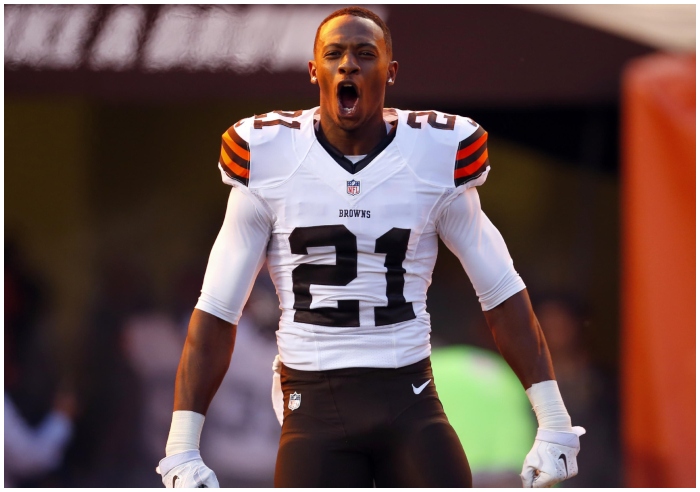
He fell out of favor with the Browns’ coaching staff and was traded to the Pittsburgh Steelers for a sixth-round pick. His stint at Pittsburgh was not fruitful either, as he struggled to get significant playtime. After leaving the Steelers, Gilbert never returned to the NFL, cementing his legacy as a great draft disappointment for the Browns.
9. New York Jets RB Blair Thomas
Thomas was an acclaimed running back at Penn State and was a Heisman Trophy finalist in 1989. He was chosen with high hopes by the New York Jets as the second overall pick in the 1990 draft. However, Thomas struggled to secure the trust of the Jets’ coaching staff and endured constant rotation in his early years.

Added to this were injuries that hampered his performance, resulting in a mere 2,000 yards and five touchdowns over four seasons with the Jets. After leaving the Jets, Thomas only played 13 games with three different teams over the next two seasons.
8. Cincinnati Bengals QB Akili Smith
Smith shot to prominence in his senior season at Oregon, where he dominated the Pac-12 with 3,783 passing yards and 32 touchdowns against only eight interceptions. Despite concerns over his limited experience at the collegiate level, the Bengals decided to draft him.
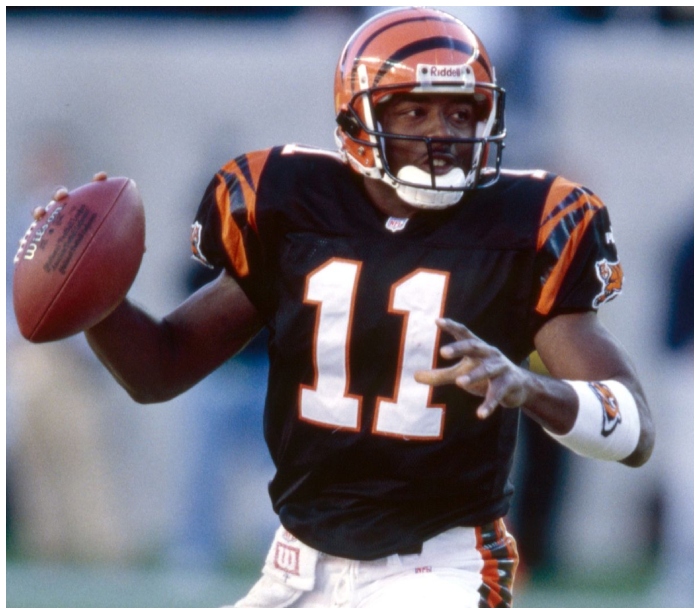
However, Smith’s inability to fully grasp the playbook resulted in disappointment. He only started 17 games in four seasons with the Bengals, throwing just five touchdown passes and 13 interceptions before being released in 2003. Smith’s brief NFL career is a warning for teams considering drafting quarterbacks with limited college experience.
7. Detroit Lions WR Charles Rogers
Rogers was regarded as a perfect fit for the Lions, given his native Michigan roots and collegiate success at Michigan State. However, his career was marred by injuries, specifically consecutive clavicle breaks in 2003 and 2004 that ended his seasons prematurely.
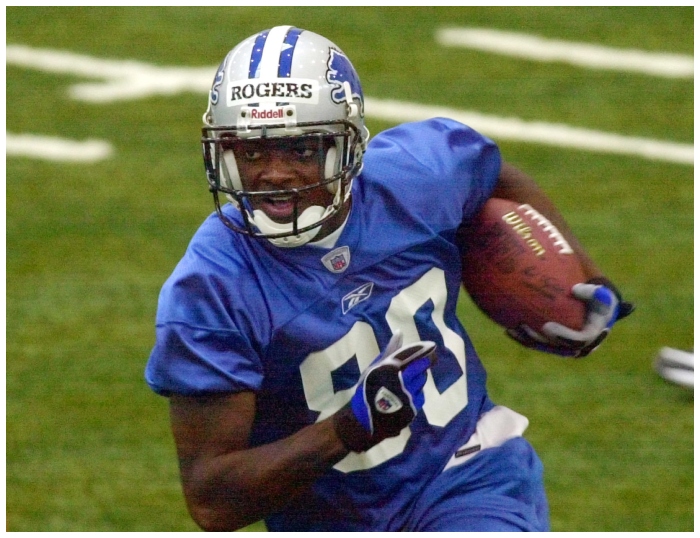
His troubles were compounded by violating the NFL’s policy, resulting in suspension. Rogers was eventually released by the Lions in 2006 due to concerns over his work ethic.
6. Washington Redskins QB Robert Griffin III
The Redskins acquired RGIII by trading three first-round picks and a second-rounder to the Rams. Griffin’s career had a promising start, earning the Offensive Rookie of the Year award and leading Washington to the postseason.

However, a serious knee injury at the end of his rookie year drastically changed his career trajectory. Post-surgery, Griffin struggled to regain his form and eventually lost the confidence of the coaching staff who favored Kirk Cousins.
5. Cincinnati Bengals RB Ki-Jana Carter
The Cincinnati Bengals’ selection of Ki-Jana Carter is one of the most unfortunate cases in NFL Draft history. Carter had an extraordinary collegiate career at Penn State, with a standout junior season where he ran for 1,539 yards and scored 23 touchdowns. This performance garnered him a spot as a Heisman Trophy finalist and rocketed his draft stock.

Enamored by Carter’s skills, the Bengals traded up to secure the first overall pick. They selected him as the central figure for their offense. However, investing heavily in the running back always involves a certain risk, given the injury-prone nature of the position. Unfortunately, this risk quickly materialized for Carter. He suffered a severe injury before his rookie season started, tearing ligaments in his knee. This initial setback was followed by two more significant injuries, drastically impacting his playing time and effectiveness. Carter’s NFL career never lived up to the promise he showed in college, cementing his status as a significant draft disappointment.
4. Seattle Seahawks LB Brian Bosworth
Known as “The Boz,” Bosworth was an intimidating linebacker whose talent secured him a spot in the first round of the 1987 supplemental draft by the Seahawks.
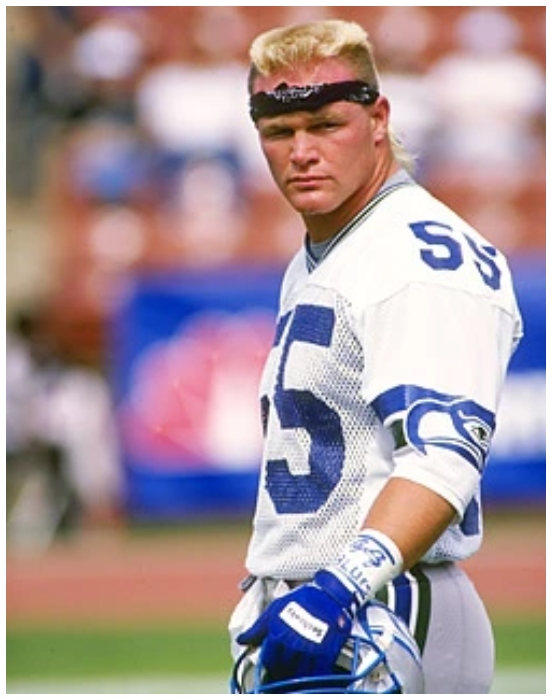
However, off-field controversies, a severe shoulder injury, and a career that lasted only two seasons turned Bosworth into one of the most prominent draft busts.
3. Green Bay Packers OT Tony Mandarich
Tony Mandarich is often considered one of the most infamous busts in the history of the NFL Draft. As an outstanding player at Michigan State, Mandarich earned All-American honors in 1988 and had an impressive showing at the NFL Combine. Sports Illustrated even dubbed him “The Incredible Bulk,” stirring expectations that the Green Bay Packers had discovered a future Hall of Famer. However, Mandarich’s career trajectory took a very different turn. His poor attitude, both on and off the field, frustrated the Packers’ organization.
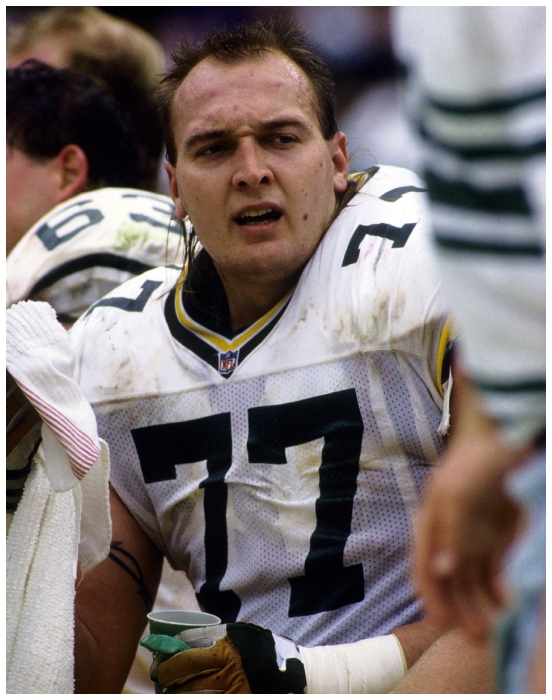
Mandarich’s performance also failed to meet expectations, leading the Packers to release him in 1992 after only three years of subpar play. Moreover, Mandarich’s career was tarnished by battling behavior issues. Following his release from the Packers, he took a three-year hiatus from professional football to address these personal problems. Despite returning to the league and playing a few more seasons with the Indianapolis Colts, Mandarich’s NFL career never reached the lofty heights predicted for him, making him an iconic draft disappointment.
2. Oakland Raiders QB JaMarcus Russell
Russell was a standout at LSU and was selected by the Raiders as the top pick in the 2007 draft. Despite initial high hopes, Russell’s career was plagued by multiple issues.
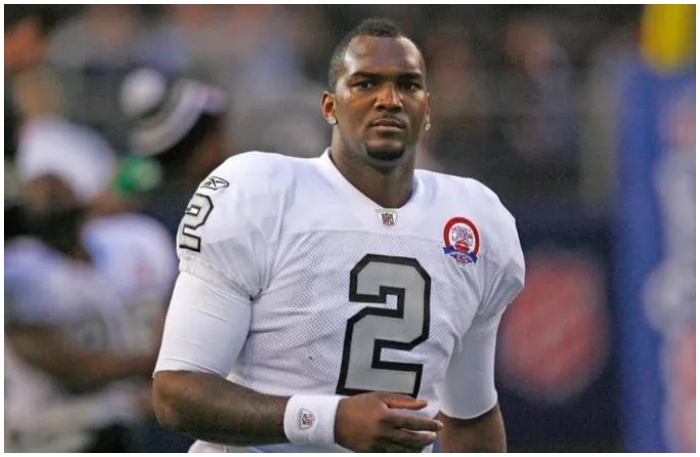
His performance was notably poor, with 19 interceptions and 21 fumbles in just two seasons. After leaving the Raiders, Russell never played in the NFL again, securing his place as one of the biggest draft busts.
1. San Diego Chargers QB Ryan Leaf
Ryan Leaf is arguably the biggest NFL Draft bust ever. Leaf’s lack of maturity was evident during his rookie season, and his performance was lackluster, with only two touchdowns against 15 interceptions. Leaf’s inability to take responsibility for his failures and the resulting loss of faith in the Chargers led to his release.
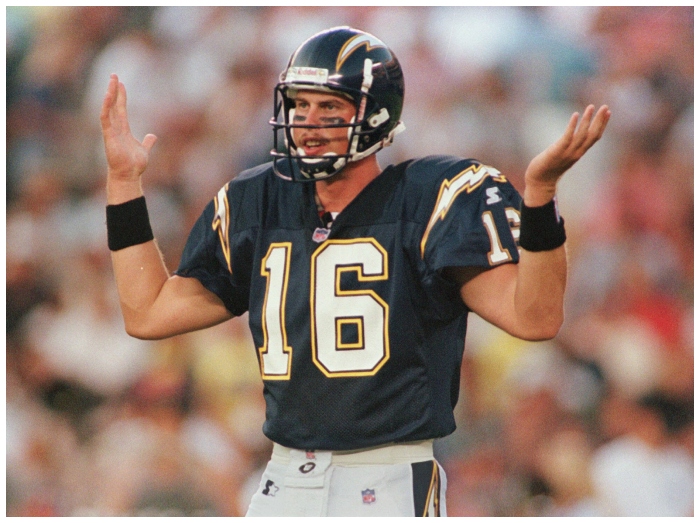
After an unimpressive stint with the Dallas Cowboys, Leaf retired at the start of the 2002 season. His unwillingness to work to excel in the NFL solidified his status as a significant draft disappointment.